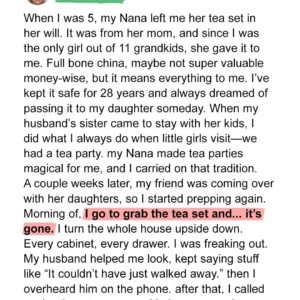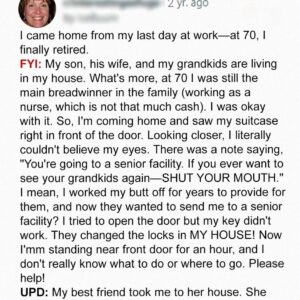Night cramps are a common yet distressing experience. They are sudden, involuntary muscle contractions that typically occur during sleep, jolting people awake with sharp, stabbing pain. Though the spasm itself may only last seconds or a few minutes, the soreness and tension it leaves behind can linger for hours, disrupting both rest and recovery. For many, a single cramp is nothing more than an occasional nuisance. But for others, especially those who experience them regularly, night cramps can create anxiety about bedtime and significantly affect quality of life. While nearly everyone will have a night cramp at some point, certain groups of people are at far greater risk due to age, health conditions, lifestyle choices, or medications. Understanding these risk factors provides a clearer picture of why cramps happen and how they can be managed.
Older adults are among the most affected. Studies suggest that nearly one in three people over the age of sixty deal with recurring night cramps. The reasons are rooted in the body’s natural aging process. Muscles gradually lose elasticity, nerves become less efficient, and blood circulation slows. These combined changes make the legs and feet especially vulnerable during sleep, when the body is still and blood flow is reduced. What may have once been occasional twinges in youth can evolve into nightly spasms in older age. For some seniors, cramps become so persistent that they begin to fear the nighttime hours, knowing that pain might tear them from their sleep without warning.
Pregnant women represent another group that frequently struggles with nocturnal cramps, especially during the second and third trimesters. The changes the body undergoes during pregnancy are dramatic and multifaceted. The added weight of a growing baby puts strain on the legs, circulation is redirected, and veins are placed under constant pressure. At the same time, hormonal shifts alter the balance of electrolytes—minerals essential for muscle health. These changes create the perfect storm for painful contractions, leaving many expectant mothers dealing with restless nights filled with sudden spasms. Although the cramps are generally harmless, they can compound the already considerable discomfort of pregnancy and make quality sleep even harder to achieve.
Athletes and people who exercise regularly face their own set of risks. It may seem counterintuitive that physically fit individuals suffer cramps, but the causes here are tied to overuse and depletion. Muscles that are pushed to their limits during training often remain tight and fatigued long after the workout ends. Heavy sweating during prolonged activity drains the body of key electrolytes such as magnesium, potassium, and calcium, which are vital for proper muscle contraction and relaxation. If hydration and replenishment are neglected, those muscles are more likely to spasm during recovery at night. Even the most disciplined athletes can wake in agony when overstressed muscles rebel, reminding them that rest, stretching, and balance are as important as exertion.
On the other side of the spectrum are people with sedentary lifestyles. Inactivity can be just as damaging as overuse. Long hours of sitting at a desk or standing in one position reduce circulation and allow muscles to stiffen. Office workers who rarely stretch, as well as individuals in jobs that require prolonged standing such as retail or factory work, frequently report night cramps. Muscles that are left inactive become prone to sudden, painful contractions when the body finally shifts position during sleep. Lack of flexibility and strength only worsens the problem, making these cramps a regular and unwelcome part of nightly life.
Underlying medical conditions are another critical factor. In some cases, night cramps are not random at all but rather a warning sign of deeper health issues. Disorders such as diabetes, peripheral artery disease, thyroid imbalances, and kidney disease can all interfere with the delicate systems that keep muscles functioning properly. Poor circulation, nerve damage, and electrolyte imbalances are common side effects of these conditions, and cramps often emerge as one of the first symptoms. While occasional cramps may not be alarming, frequent and severe episodes in individuals with chronic health conditions should never be ignored. They may signal that the body is struggling with complications that require medical attention.
Medications also play a surprisingly large role in the occurrence of night cramps. Some drugs alter the way muscles and nerves interact, while others interfere with electrolyte levels. Diuretics, often prescribed for high blood pressure, can deplete potassium and magnesium. Statins, widely used to manage cholesterol, have been linked to muscle issues, including cramps. Even certain birth control pills and asthma medications have been reported to increase susceptibility. If cramps appear shortly after beginning a new prescription, it is essential to bring it up with a healthcare provider. Adjustments to dosage or switching medications may provide relief without compromising overall treatment.
Recognizing these risk factors is the first step toward prevention and management. Older adults may benefit from gentle stretching routines before bed, staying hydrated throughout the day, and ensuring they maintain balanced nutrition with enough magnesium and potassium. Pregnant women are often advised to wear supportive footwear, stay active with safe exercises, and avoid sitting or standing for too long. Athletes can reduce their risk by prioritizing proper recovery, stretching, and electrolyte replenishment after intense workouts. Those with sedentary jobs can build habits of movement into their day, such as short walks or desk stretches, to keep circulation flowing. For individuals with medical conditions or medication-related cramps, professional guidance is crucial. Addressing the underlying issue often leads to noticeable improvements.
Although night cramps are common, they don’t have to be accepted as an unavoidable part of life. With awareness of the groups most at risk and the underlying causes, many people can take meaningful steps to reduce their frequency and severity. Proper hydration, balanced diet, stretching, and consultation with doctors when cramps are persistent all contribute to better outcomes.
In the end, night cramps may be a small detail in the grand picture of health, but for those who suffer regularly, they are anything but trivial. They disturb sleep, diminish well-being, and create anxiety about the night ahead. But with knowledge, prevention, and the right care, relief is possible. Understanding who is most vulnerable and why allows us not only to manage the pain but also to uncover potential health concerns before they grow worse. By treating night cramps as signals rather than mere inconveniences, many can reclaim peaceful, uninterrupted sleep and the restorative rest their bodies need.





